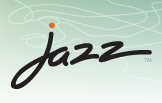IBM, which combined its System i and System p server product lines earlier this year, is revamping its Power Systems to offer more systems for enterprise and midmarket customers. The enhancements include additional processors based on the IBM Power Architecture as well as more virtualization capabilities. These IBM Power Systems compete against both Hewlett-Packard and Sun Microsystems in the Unix market.
IBM is looking to widen its offering for the Unix market with new Power Systems that support more processing cores based on IBM’s Power Architecture as well as new management and virtualization features.
IBM Power Systems were introduced in April as a new set of offerings that combined the older IBM Systems i and System p under one product portfolio. The combination of these two systems gave IBM a set of offerings for enterprises and midmarket companies that not only can run AIX—IBM’s version of Unix—but also Linux and the i OS—the renamed version of the i5/OS operating system.
While the overall Unix market pales in comparison to servers based on x86 processors, this market remains important for three major OEMs: IBM, Hewlett-Packard and Sun Microsystems. According to Gartner, while shipments of Unix-based servers fell in the second quarter of 2008, worldwide revenue increased nearly 10 percent year over year to about $4.2 billion for the quarter. Not surprisingly, IBM, which has been pushing its Unix platforms beyond the enterprise into the midmarket and even the small and midsize business, saw its revenue increase 29 percent in the second quarter for a total of $1.5 billion.
By combining the two systems into one product portfolio, IBM is looking to further strengthen its position in the Unix market. It was also a way to absorb some losses for IBM, which had seen its System i revenue slip in 2007, while System p continued to grow.
HP has its Integrity Systems that use Intel’s Itanium processors, while Sun, which has been struggling selling its high-end servers, offers its SPARC-based products and Solaris operating system.
IBM listed the starting price of the Power 560 Express with the AIX operating system at $47,216. There was no pricing information for the updated version of the Power 570.
In addition to the new hardware, IBM also rolled out several management and virtualization features of its Power Systems. These include an update for IBM’s PowerVM—the company’s virtualization software for Power Systems—called Active Memory Sharing. While only in beta now, Active Memory Sharing allows the system to access more memory in virtual environments by pooling compute resources between the partitions.
IBM is also offering a new management console called Systems Directory. This management tool works across all three operating systems—Linux, i, and AIX—and allows IT managers to control and check the resources both in the physical hardware and within virtual environments.
Finally, IBM is rolling out an Enterprise version of the AIX operating system, which includes the OS itself plus Tivoli and PowerVM software.
